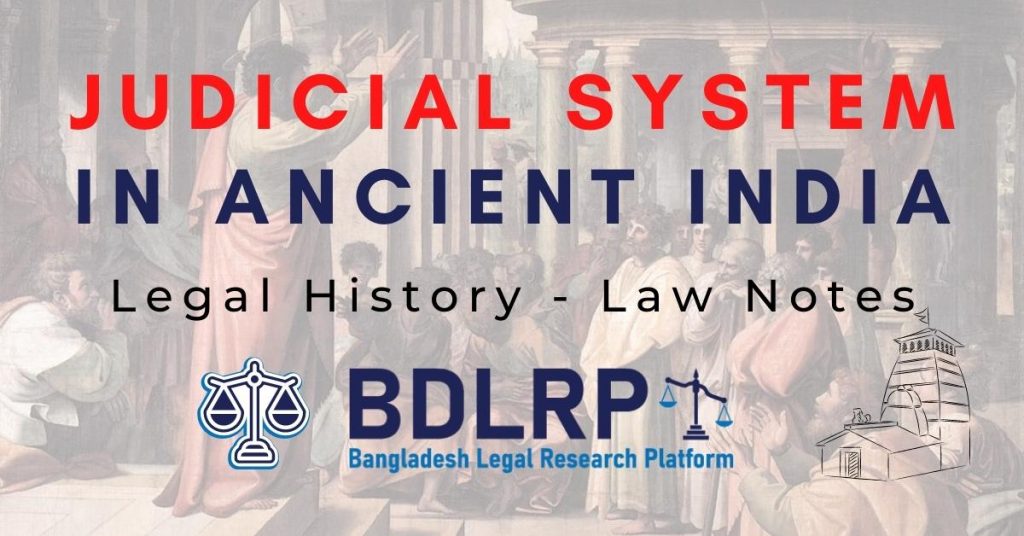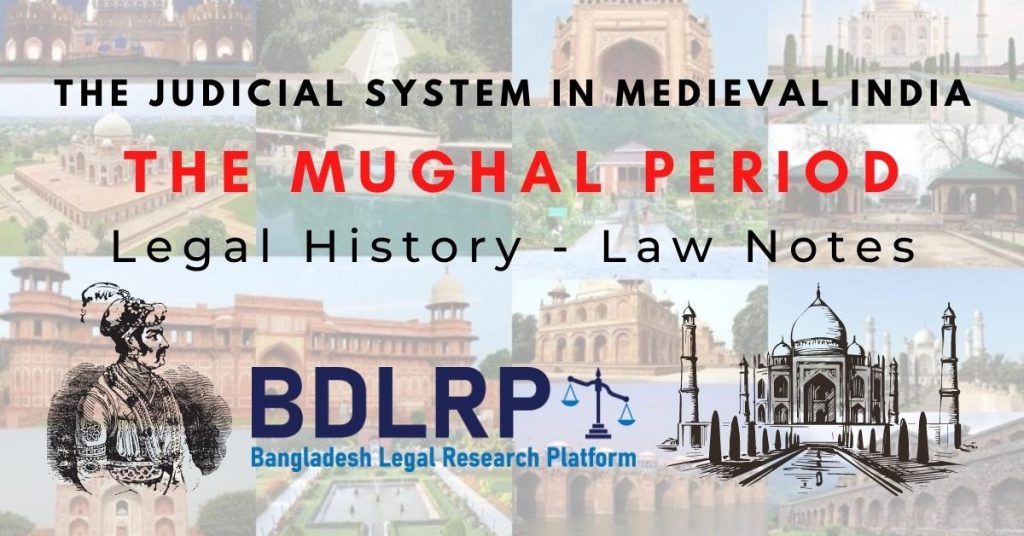In ancient times, the judicial system was associated with religion and social norms. The King was the supreme head of the legislative, executive and judiciary. The three systems of substantive law were recognized by the court, the Darma-shastra, Artha-shastra, and custom which was called Sadachara or Charitra. The Artha shastra and Manusmriti were considered authoritative legal guidance.
Hindu period extended for nearly 1500 years (from 400 BC to 1100 BC). Hindu society, institutions, and beliefs originated in ancient India in the Hindu period and gradually reached perfection.
1. Ancient Hindu social order, institutions, and religious philosophy:
The two main aspects of the social structure of ancient India were the caste system and the joint family system. Below is a brief discussion about it.
(a) Caste system:
Shyam Shastri in his book “Evolution of Indian Political Organization” states that the caste system is unique and flexible in ancient India compared to any other place. A caste was a special group consisting only of people born into that caste. The four main castes in ancient society were as follows:-
i. Brahmin: Among the four castes, the brahmins were the superior. This caste was formed with pandits and priests. They had many privileges and prerogatives in law and in fact.
ii. Kshatriya: The Kshatriyas were the nobles and warriors. Most of the rulers of the Kingdom and States of ancient India belonged to this caste.
iii. Vaisya: The Vaisyas were the third caste. They were the merchants and traders.
iv. Sudra: Sudras were the lowest class of society. They were workers and did lower ranked work.
The Hindu aristocracy consisted three upper castes i.e., Brahmins, Kshatriyas, and Vaisyas. Caste relating to their status, living, marriage, profession, and social obligations. The nature and characteristics of their lifestyle differed from caste to caste.
(b) Joint family system:
Joint family system also played a major role in ancient Hindu period. The family was considered the unit of society. An ancient family included parents, children, grandchildren, uncles and their descendants, and their collaterals on the male side. The head of the joint family was called patriarch and his authority was ultimate over all the members.
Two systems of family law, namely Mitakshara and Dayabhaga, became the basis of civil law. They dealt with property rights in a Hindu joint family and mostly amongst land-owning families.
Another important concept was saptanga (seven limbs) of the States. These were sovereign (swamin), minister (amatya), territory with the people (rashtra), army (danda) and friends. The King is the supreme authority of State.
The Hindu religion and philosophy laid down four great aims of human life: religion and philosophy laid down four
great aims of human life: Dharma, Artha, Karma, and Moksha.
2. Ancient Kingdoms: Administrative Units
Ancient India was divided into various independent States and in each State the King was the Supreme authority. The King, with the assistance of his priest (Purohita), and military commander (Senani).
Towns and cities: Kautilya mention that each city guard. It is noted that there was under a council of 30 members; A committee was entrusted with five members.
Villages: The whole of India was made up of numerous villages. A district consisted of many villages. Villages mad e up of families and clans. Each village had a village headman a village panchayat or village council.
3. Administration of Justice:
(a) Constitution of courts:
i. The King’s Court: The King’s court was the highest court of appeal in the State. It was also a court of original jurisdiction for cases of vital importance to the state. In the King’s Court the King was advised by learned Brahmins, the Chief Justice and other judges, ministers, elders and representatives of the trading community.
ii. The Chief Justice’s Court: Next to the King’s Court was the Chief Justice’s court which consisted of the Chief Justice and a board of judges to assist the Chief Justice. All the judges in the board belonged to three upper castes preferably Brahmins.
iii. Special Tribunal: Sometimes separate tribunals with specified territorial jurisdiction used to be formed from among judges who were members of the board of the Chief Justice’s court.
iv. Town or District Court: In towns and districts courts were run by the government officials to administer justice under the authority of the king.
v. Village Council: The local village councils or Kulani was constituted at village level. This council consisted of aboard of five or more members for administration of justice to villagers. The councils dealt with petty civil and criminal matters.
(b) Judicial procedure:
The court procedure was very complex. According to Brihaspati there were four levels of litigation or proceedings namely:
(i) Plaintiff or Petition: The litigant states his right or claim or seeks relief from the court against the defendant.
(ii) Reply or Answer: In view of the statement of the RG, the defendant could have accepted the claim of the plaintiff or, if necessary, he could have contested the suit by filing a reply denying the claim of the RG.
(iii) Trial and Inquiry: In the third stage, the parties would present evidence to the court in support of their case and, if necessary, the court would conduct an inquiry.
(iv) Judgment or Decision: At the fourth and final stage of the litigation, the judge would give a judgment or final decision based on the evidence.
(c) Institution of lawyers:
Smritis do not refer to the existence of any step institution of lawyers in the ancient Hindu judicial system.
(d) Appointment of Judges and Judicial Standard:
In the appointment of the Chief Justice and other judges the question of caste consideration played vital role. The Chief Justice was mandatorily appointed from Brahmins. A Sudra was forbidden to be appointed as a judge. Appointments were made from among the persons who were highly qualified and learned in law. Women were not allowed to hold the office of a judge. Judges were required to take the oath of impartiality when deciding disputes between citizens.
(e) Trial by jury:
The jury system existed in ancient India but not in the same form as understood in today’s world. There is evidence that the community members used to assist the administration of justice.
(f) Trial by ordeal:
Ordeal which was a form of ritualistic religion and belief in God was a means of proof to determine the guilt of a person. The application of trial by ordeal was limited only to those cases where no concrete evidence was available on either side. This method of ordeal was extremely painful and dangerous for the accused, and sometimes the person giving the ordeal died during the ordeal. Some important types of ordeal, which were commonly adopted, may be stated as follows, The ordeals were:
- ordeal and balance;
- ordeal of fire;
- ordeal by water;
- ordeal by poison;
- ordeal of lot;
- ordeal of rice grains;
- ordeal of fountain-cheese.
(g) Crime and punishment:
According to the ancient Hindu criminal law, fines were imposed on criminals along with corporal punishment.
(i) Punishment for Theft: Manu and Gautama say that one who steals only has to pay a fine of eight times the value of the stolen goods, while a Vaishya, Kshatriya and Brahmin who steals has to pay a fine of sixteen times, thirty-two times and sixty-four times the value of the stolen goods respectively. . The reasoning behind this was that since a higher standard of living and behavior was expected from the upper classes than from the lower classes.
(ii) Punishment for Rape and Adultery: In the case of rape and adultery, various punishments were given depending on the caste identity of the offender and the woman. According to the Yajnabandha, if the adulterer belonged to a high caste, a fine was imposed on him.
(iii) Peace of defamation: In defamation cases it was ensured that upper caste people get due respect from lower caste people. Yajnavalkya, Manu and Gautama say that if a Kshatriya or Vaishya defamed a Brahmin, they had to pay a fine of 100 panas and 150 panas respectively, and in such cases the Shudra’s tongue was cut off. A Brahmin defaming a Kshatriya or a Vaishya had to pay a fine of 50, 25 or 12 panas respectively. According to Gautama, if a Brahmin defamed a Shudra, he would not be punished. If a low-caste person sat on the same bench as an upper-caste person, the low-caste person was marked as dagi and given a cane on the backside.
(iv) Punishment for murder: According to ancient sources, if a person kills a Kshatriya, 1000 cows, if he kills a Vaishya, 100 cows and if he kills a Shudra, he has to pay 10 cows as fine. These cows were given to the king to give to the relatives of the deceased. A bull was to be given to the king as a penalty for murder. According to the Baudhyayana code, a low-caste person who killed a Brahmin was punished with death and his property was confiscated. If a Brahmin killed another Brahmin, he was branded as Daghi and sentenced to exile.
Author: Mir Md Nurunnobi
Department of Law and Land Administration,
Patuakhali Science and Technology University (PSTU).





Comments are closed.